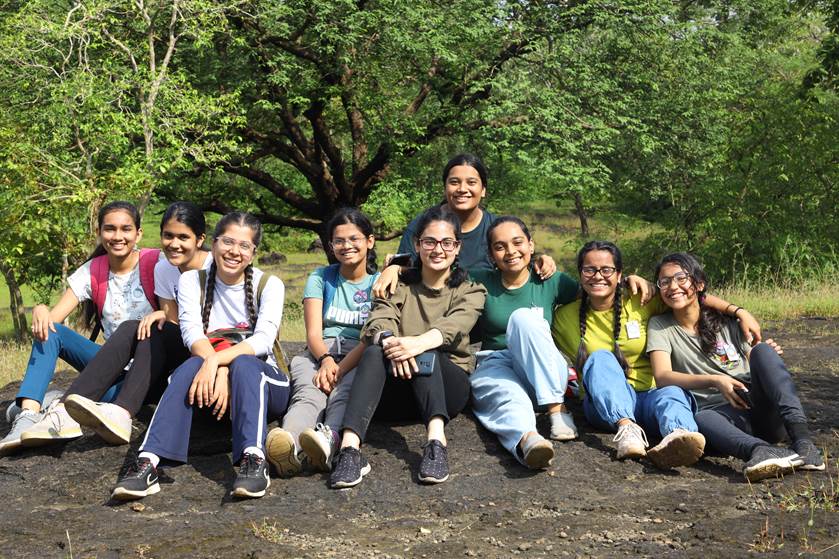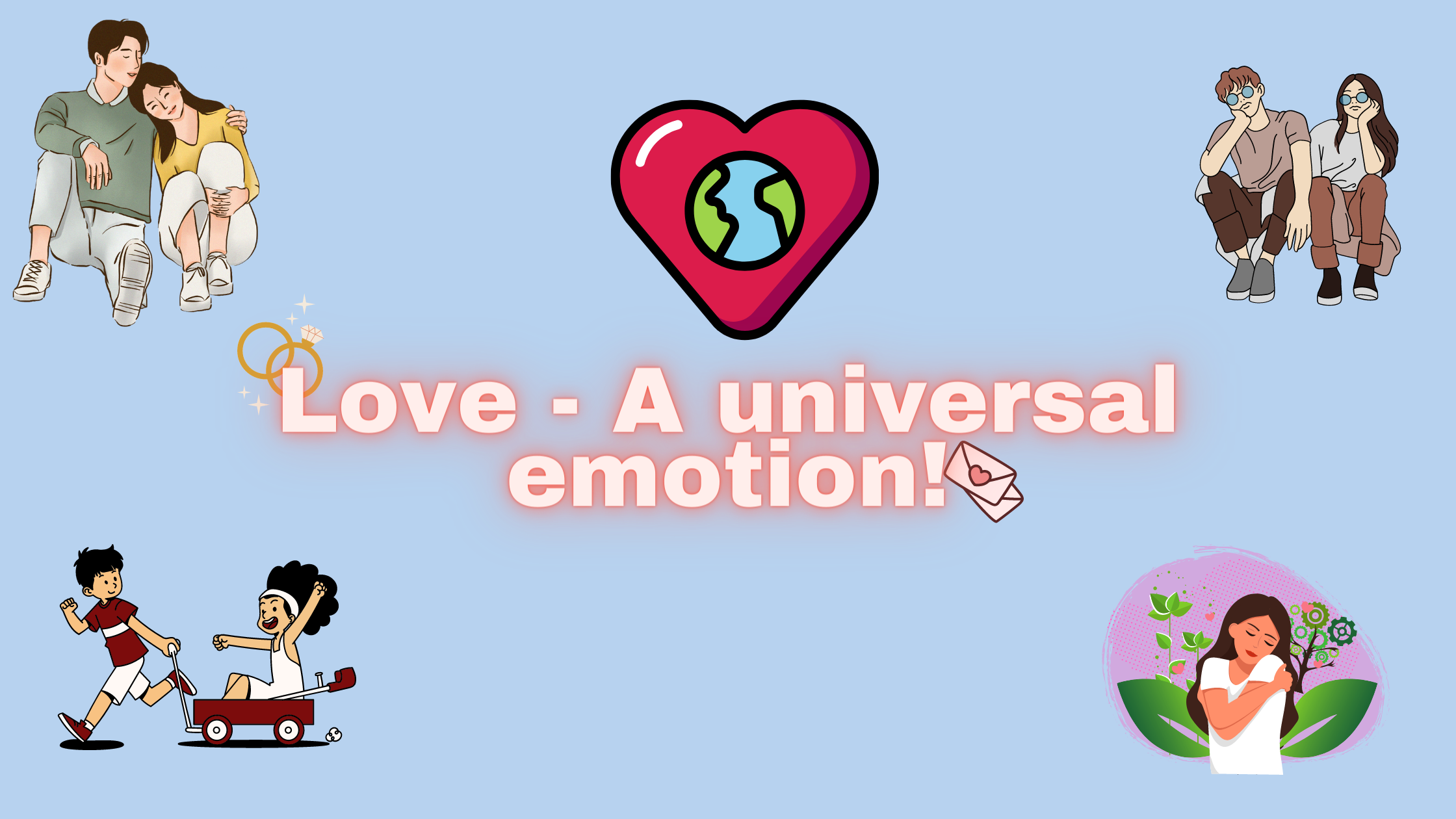There are 8 basic emotions that every human experiences. Love is one of them. There is no clear definition of love. Love has different meanings in different relationships. Love is also found in our relationships with parents, friendship, towards god, siblings and in our own self. It’s everywhere. However, when we use the term “love”, the first relationship that comes to our mind is romantic love.
Scientifically love is defined as, “a complex emotion involving strong feelings of affection & tenderness for the love object, pleasurable sensations in their presence, devotion to their wellbeing, and sensitivity to their reactions to oneself.”
A theory called “Maslow’s Hierarchy of Needs” was developed by American psychologist Abraham Maslow. Maslow outlines the various levels of needs and priorities that humans have in this hierarchy. The belonging need is described as love, affection, family, friends, and intimacy. Maslow places belonging on the third layer of the hierarchy of needs, while some have suggested that love and affection and a sense of belonging could form the pyramid’s base.
Robert Sternberg’s Triangular Love Theory involves 3 parts: Intimacy(emotional), Passion(physical), and Commitment(cognitive). Intimacy means closeness, affection and connectedness. Passion means drives related to sex, physical closeness and romance. Commitment means long-term determination to maintain the romantic relationship.
Nonlove means people having only the most casual relationships. For eg., the way you feel about a person who takes your ticket at the movies.
Liking means when there’s only intimacy present between 2 people. For eg., friendship.
Infatuation means feelings of lust/physical passion without intimacy and commitment. For eg., a short-term relationship based only on sexual attraction.
Empty love means commitment without passion or intimacy. At times, a strong relationship can lose its “spark”. For eg., arranged marriage or couples who stay together just for the sake of children.
Romantic love wherein couples share emotional intimacy and enjoy sexual passion but their future relationship plans are undecided. For eg., dating.
Companionate love means stronger than friendship because there’s long-term commitment but there’s minimal or no sexual passion. For eg., a couple that enjoys each other’s company and their relationship but no longer feel much sexual interest.
Fatuous love means there’s passion and commitment without intimacy. For eg., mindless loving where there’s no emotional bond between partners. Such relationships often sustain.
Consummate love means an ideal love i.e. a long term relationship where the couple has emotional bond and sexual passion towards each other.
Following is a table of Sternberg’s Triangular theory of love. Each type of love is described by the presence or absence of the 3 primary components : intimacy, passion & commitment.
Psychologists have criticized Sternberg’s theory on many factors. Sternberg’s theory was criticized because he didn’t specify if the different parts of love depend on how long the couple has been together or what stage they’re in. His theory oversimplifies love’s complex nature and reduces it to just 3 components: intimacy, passion, and commitment. Love is a multidimensional phenomenon. Also, he only looked at a small group of couples who were married for 4-5 years. Love may be different for people who are in college than for people who aren’t. His theory tries to explain love but doesn’t cover all the things that help love grow.
Another psychologist John Lee gave the Colour Wheel Model of Love, suggesting 3 primary love styles.
1)Eros means involving both physical as well as emotional passion, which can be love for an ideal person.
2)Ludus means game. Ludus means playful, fun love but may not be serious. People in this kind of love are scared of commitment & wary of intimacy.
3)Storge means natural affection also including familial love. This love represents love as friendship. Friends sharing commonalities gradually fall in love. Lee later gave 3 secondary love styles by combining them with the 3 primary love styles. These include
1)Mania, combining Ludus & Eros, called obsessive love.
2)Pragma, combining Ludus & Storge, is called real and practical love.
3)Agape, combining Eros & Storge, is called selfless love.
Psychologist Elaine Hatfield proposed that there exist 2 basic kinds of love called passionate and compassionate love.
Compassionate love means mutual respect, trust, and affection. When people have mutual feelings and shared respect for one another, then this love develops. The 2nd kind of love that Hatfield proposed is passionate love, which involves intense emotions, sexual attraction, anxiety and affection. Reciprocation of these intense emotions results in people feeling elated and satisfied. Passionate love is usually transitory lasting between 6 to 30 months. Ideally, it’s passionate love which leads to far more enduring compassionate love !
In psychologists Elaine Hatfield and Ellen Berscheid’s labeling theory of passionate love, people experience romantic love when 2 events happen together: intense physiological arousal and situational cues that indicate that “love” is the appropriate label for the experienced feelings. (Berscheid & Walster, 1974a). Sexual arousal, excitement or even negative emotions like jealousy can produce physiological arousal. Whatever the cause maybe, if that arousal is labeled as “I must be falling in love”, etc. then the experience is regarded as passionate love.
All popular love theories stated above have been conducted and formed on the basis of heterosexual couples. Over the years, the assumption that romantic love happens only between heterosexual people has changed. The LGBTQ+ community has gained acceptance worldwide. #loveislove has been used on social media quite a lot. Most research has been focused on heterosexual relationships, but a rising no. of studies have started looking at LGBTQ+ relationships.
Factors leading to relationship stability- partners’ personality traits, support for the relationship from others, dependence on the relationship – are similar for homosexual and heterosexual couples (Diamond, 2003; Diamond & Savin Williams, 2003; Kurdek, 2005 & 2008).
Gays and lesbians negotiate their needs more effectively & experience more support, stability and satisfaction in their relationships with their partners compared to their heterosexual counterparts. (Kurdek, 2005)
Love comes in different shapes, sizes, and ways. You can love more than one person simultaneously, in multiple ways. Emotional intimacy is there in few relationships, not all. Similar is the case with passion and commitment. Attachment is another component which exists in love. Positive attachment helps to sustain an emotionally rich and secure relationship.
From all the above theories, it can be said that there are different dimensions of love. Love is seen as important and special. It’s put on a pedestal, making it almost impossible to fulfill all the expectations that people have for their relationships and marriages. As the world continues to evolve, so will the views on love & its significance.
With love comes heartbreaks, breakups, jealousy, and whatnot!
Cherry, K. (2022, April 21). 5 Psychological Theories of Love. Verywell Mind. https://www.verywellmind.com/theories-of-love-2795341
Feldman, R., & Babu, N. (2018). Development Across The Life Span (8th ed.). Pearson Education.
Lovering, N. (2022, September 20). The Psychology of Love. Psych Central. https://psychcentral.com/relationships/the-psychology-of-love
Wikipedia contributors. (2023, February 18). Theories of love. Wikipedia. https://en.wikipedia.org/wiki/Theories_of_love


